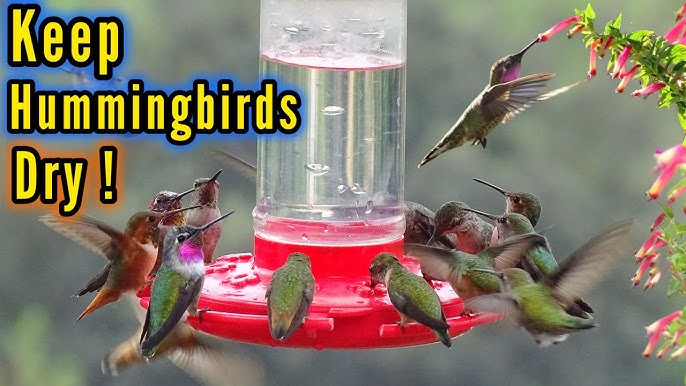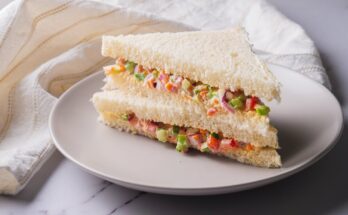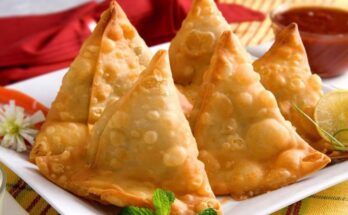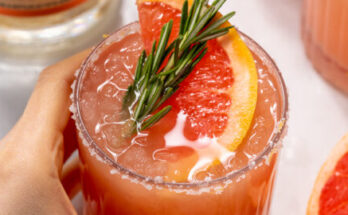Hummingbird Feeder Recipe: Hummingbirds are some of nature’s most fascinating creatures, with their iridescent feathers and incredible flying abilities.
These tiny birds rely on high-energy food to sustain their active lifestyles. By providing them with a homemade nectar solution, you not only help them survive but also get to enjoy the beauty of these lively visitors in your yard.
This guide will walk you through a simple, cost-effective recipe for hummingbird food and teach you how to maintain a feeder to keep these delightful birds coming back.
Why You Should Make Your Own Hummingbird Food
When it comes to feeding hummingbirds, making your own nectar has several advantages. Store-bought mixes often contain additives and dyes that can be harmful to these delicate birds. Homemade nectar is free from harmful chemicals, ensuring their safety. It’s also much cheaper and more convenient than purchasing ready-made solutions. Plus, you’ll have the satisfaction of knowing exactly what your feathered friends are consuming.
Understanding Hummingbird Nutrition
Hummingbirds primarily feed on flower nectar, insects, and tree sap in the wild. Their diet requires a balance of sugar for energy and proteins for growth and health. By creating a sugar-water solution, you mimic their natural food source, giving them the energy boost they need to fuel their rapid movements and long flights. This simple solution supports their active lives, especially during migration seasons.
Materials and Ingredients Needed
Before you start making hummingbird food, gather these materials:
- Granulated white sugar (never substitute with honey, brown sugar, or artificial sweeteners).
- Tap or filtered water.
- A clean saucepan for mixing.
- A spoon for stirring.
- A hummingbird feeder (preferably one that’s easy to clean and has red accents to attract birds).
When selecting a feeder, opt for a design that prevents leaks and is easy to refill. Bright red feeders are most effective, as they mimic the colors of flowers that naturally attract hummingbirds.
The Perfect Hummingbird Nectar Recipe
Making hummingbird nectar is incredibly simple. Follow these steps for a fail-proof recipe:
- Measure the Ingredients: Use a ratio of 1 part sugar to 4 parts water. For instance, 1 cup of sugar to 4 cups of water.
- Heat the Water: Boil the water to remove impurities and ensure the sugar dissolves completely. Allow it to cool slightly before mixing.
- Add the Sugar: Gradually stir in the sugar until it’s fully dissolved. The solution should be clear and free from granules.
- Cool the Nectar: Let the mixture cool to room temperature before pouring it into the feeder.
- Fill the Feeder: Carefully pour the nectar into your feeder, ensuring no spills. Seal the feeder tightly to prevent leaks.
Pro Tip: Avoid using red food coloring, as it can be harmful to hummingbirds. The red color of the feeder itself is enough to attract them.
Recipe Variations and Tips
- Adjust for Climate: In hot weather, you may need to refresh the nectar more frequently to prevent fermentation.
- Storage Tips: Store unused nectar in the refrigerator for up to one week. Always label the container with the preparation date.
- Consistency Matters: Always maintain the 1:4 ratio for sugar and water to provide the optimal energy level for hummingbirds.
How to Properly Fill the Feeder
Before filling your feeder, ensure it’s thoroughly cleaned. Residue or mold can harm the birds. When pouring the nectar, use a funnel to avoid spills. Hang the feeder in a shaded, safe location, preferably near flowers or shrubs that hummingbirds naturally visit.
Maintenance and Cleaning of the Feeder
Keeping your hummingbird feeder clean is crucial to the birds’ health. Dirty feeders can harbor mold and bacteria, which can be harmful. Follow these steps to maintain a clean feeder:
- Rinse Regularly: Clean the feeder every 2-3 days, or more frequently during hot weather, to prevent nectar spoilage.
- Deep Cleaning: Disassemble the feeder and wash each part thoroughly using warm water and a bottle brush. Avoid using soap, as residue can linger and harm hummingbirds. Instead, use a vinegar and water solution (1 part vinegar to 4 parts water) for a natural and effective clean.
- Inspect for Mold: Check for any black spots or discoloration. If you spot mold, soak the feeder parts in a vinegar solution and scrub with a brush.
- Rinse and Dry: Ensure all parts are rinsed thoroughly with clean water and dried completely before refilling the feeder.
Where to Place the Feeder for Maximum Attraction
The placement of your feeder can significantly impact its success. Follow these guidelines to attract more hummingbirds:
- Choose a Visible Location: Place the feeder in an open area where hummingbirds can easily spot it while flying by.
- Provide Shade: Hang the feeder in a shaded spot to keep the nectar cool and prevent it from spoiling too quickly. Partial shade under a tree or patio works well.
- Keep it Safe: Position the feeder away from areas with heavy foot traffic or predators like cats. High, secure spots are ideal.
- Proximity to Flowers: Place the feeder near bright, nectar-rich flowers to increase its attractiveness. Hummingbirds are naturally drawn to colorful blooms.
Tips to Attract More Hummingbirds
Want your yard to become a hummingbird haven? Here are some tips to encourage more visits:
- Add Native Plants: Incorporate flowers that are rich in nectar, such as bee balm, salvia, or trumpet vines. Native plants are particularly effective as they’re familiar to local hummingbirds.
- Use Multiple Feeders: If you have a larger yard, place several feeders at different spots to minimize competition among birds.
- Create a Water Source: Install a mister or shallow birdbath. Hummingbirds love to bathe and will frequent spots with a reliable water source.
- Feed Consistently: Keep feeders filled and clean. Hummingbirds remember reliable food sources and will return regularly.
Common Mistakes and How to Avoid Them
Feeding hummingbirds is simple, but mistakes can deter or harm them. Avoid these common pitfalls:
- Using Red Dye: Never add food coloring to nectar. It’s unnecessary and can harm hummingbirds over time.
- Wrong Sugar Type: Only use white granulated sugar. Alternatives like honey or artificial sweeteners can ferment or lack the nutrients they need.
- Neglecting Cleaning: Dirty feeders can become breeding grounds for bacteria, harming the birds.
- Improper Ratios: Stick to the 1:4 sugar-water ratio to mimic natural nectar.
Monitoring Hummingbird Behavior
Once your feeder is set up, observe the hummingbirds’ behavior:
- Feeder Visits: Look for birds hovering near the feeder or feeding regularly.
- Aggressive Behavior: Hummingbirds can be territorial. If you notice fighting, consider adding more feeders to reduce competition.
- Seasonal Activity: Watch for changes in visits as seasons change. Migrating hummingbirds may use your feeder more in spring and fall.
Seasonal Adjustments to Your Feeder
Hummingbirds’ feeding needs vary with the seasons. Here’s how to adapt:
- Spring and Fall: These are peak migration times. Keep feeders full and clean to support migrating birds.
- Summer: Clean the feeder more frequently to prevent spoilage in the heat.
- Winter: In warmer climates, some hummingbirds may remain year-round. In colder areas, use a heated feeder or bring it indoors overnight to prevent freezing.
Fun Facts About Hummingbirds
Here are some fascinating facts about your tiny visitors:
- Speed and Agility: Hummingbirds can flap their wings up to 80 times per second and fly backward!
- Incredible Migration: Some species travel over 3,000 miles during migration.
- Pollination Helpers: Hummingbirds play a vital role in pollinating flowers as they feed.
- Fast Metabolism: They consume up to twice their body weight in nectar daily to sustain their energy.
FAQs about Hummingbird Feeder Recipe
What is the best sugar-to-water ratio for a hummingbird feeder?
The optimal sugar-to-water ratio for a hummingbird feeder is 1:4. This means for every one part of white granulated sugar, you should mix four parts of water. This ratio closely mimics the natural concentration of sugar in flower nectar, which is ideal for hummingbirds.
Can I use honey or brown sugar instead of white sugar?
No, it is not recommended to use honey, brown sugar, or any other types of sugar in hummingbird feeders. Only white granulated sugar should be used because other sugars can contain additional substances that might be harmful to hummingbirds. Honey can ferment and promote harmful bacterial growth, while brown sugar contains molasses, which is not suitable for hummingbirds.
How often should I change the nectar in the feeder?
You should change the nectar in your hummingbird feeder every 2 to 3 days, more often if the weather is particularly hot or the feeder is in direct sunlight. Regular changing prevents fermentation and bacterial growth in the nectar, which can harm the birds.
Do I need to boil the water for the hummingbird feeder recipe?
Boiling the water is not strictly necessary if you are using tap water that is safe to drink. However, boiling can help to dissolve the sugar more effectively and remove any impurities, ensuring the nectar is as clean and safe as possible for the birds.
Is it safe to add red dye to the hummingbird nectar?
It is best to avoid adding red dye to the hummingbird nectar. While the color red attracts hummingbirds, using a feeder with red components or adding a red ribbon to the feeder can be just as effective. Red dye can be harmful to the birds, and there’s no nutritional benefit to adding it.
Conclusion
Making your own hummingbird nectar is a rewarding and simple way to support these amazing creatures. By following this step-by-step guide, you can provide a safe, nutritious food source while enjoying the beauty of hummingbirds in your yard. Remember to maintain your feeder, choose the right location, and enjoy the fascinating behavior of these lively birds.



